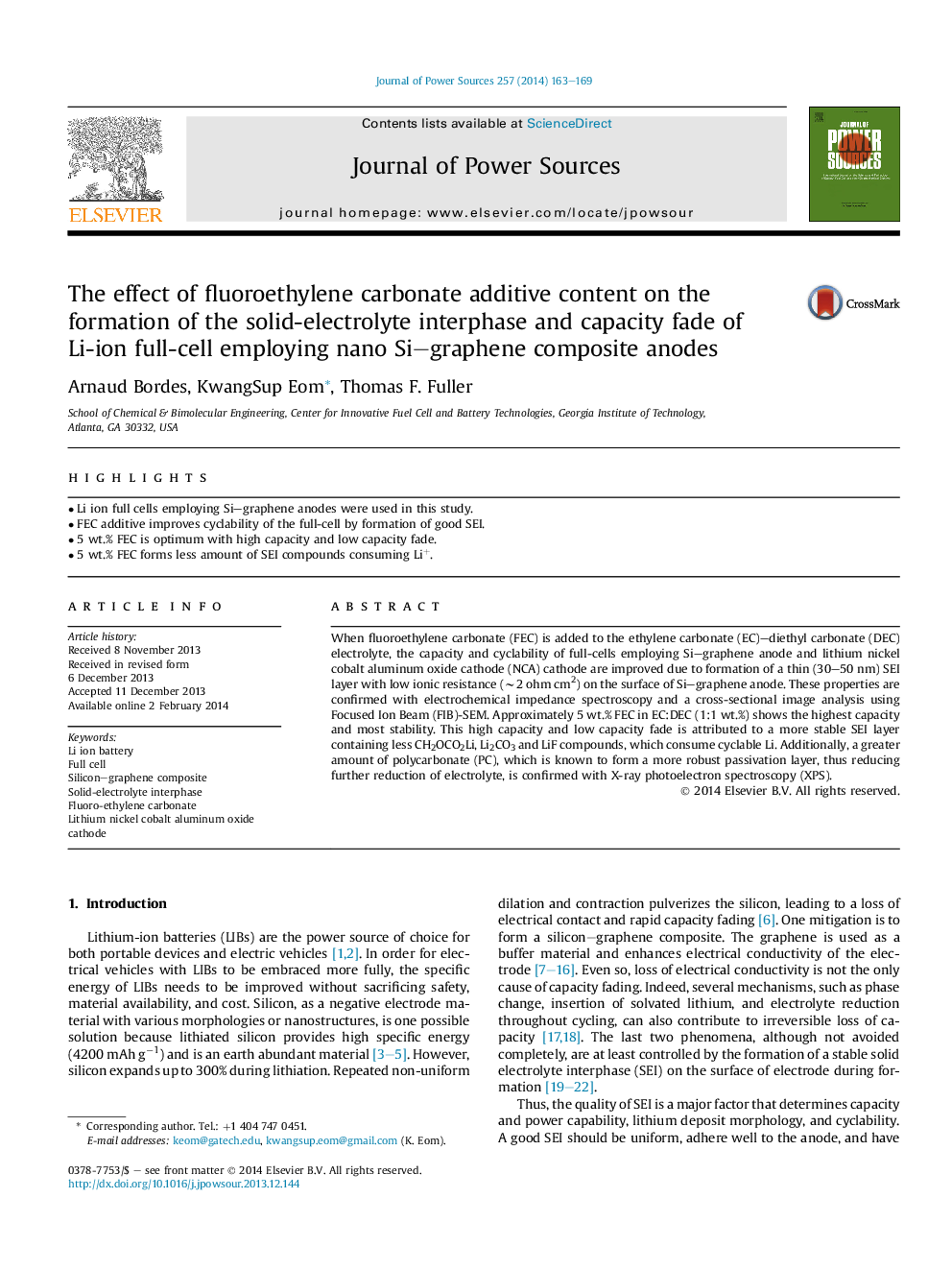| Article ID | Journal | Published Year | Pages | File Type |
|---|---|---|---|---|
| 7737131 | Journal of Power Sources | 2014 | 7 Pages |
Abstract
When fluoroethylene carbonate (FEC) is added to the ethylene carbonate (EC)-diethyl carbonate (DEC) electrolyte, the capacity and cyclability of full-cells employing Si-graphene anode and lithium nickel cobalt aluminum oxide cathode (NCA) cathode are improved due to formation of a thin (30-50 nm) SEI layer with low ionic resistance (â¼2 ohm cm2) on the surface of Si-graphene anode. These properties are confirmed with electrochemical impedance spectroscopy and a cross-sectional image analysis using Focused Ion Beam (FIB)-SEM. Approximately 5 wt.% FEC in EC:DEC (1:1 wt.%) shows the highest capacity and most stability. This high capacity and low capacity fade is attributed to a more stable SEI layer containing less CH2OCO2Li, Li2CO3 and LiF compounds, which consume cyclable Li. Additionally, a greater amount of polycarbonate (PC), which is known to form a more robust passivation layer, thus reducing further reduction of electrolyte, is confirmed with X-ray photoelectron spectroscopy (XPS).
Related Topics
Physical Sciences and Engineering
Chemistry
Electrochemistry
Authors
Arnaud Bordes, KwangSup Eom, Thomas F. Fuller,
